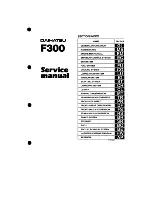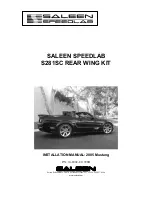
5
270
Driving
threshold for ESC activation, allowing
higher wheel spin than normally
granted by the ESC system. The
(ESC OFF) button is fitted beside the
gear shift lever: to deactivate the
system see “Drive Mode” in this
section.
WARNING!
In SPORT mode the ESC control
thresholds are higher for maximum
performance on dry road surface. To
ensure maximum security of the ESC is
recommended not to activate SPORT
mode on surfaces with medium- and
low-grip (e.g., wet, snow, dirt, etc..)
with ESC system active (button
(ESC Off) not pressed).
NOTE:
• When in “ESC off” mode, the TCS
functionality of ESC is deactivated
(except for the limited slip feature
described in the TCS paragraph
of this chapter). All other stability
features of ESC function regularly.
• To improve the vehicle's traction
when driving with snow chains, or
when starting off in deep snow,
sand, or gravel, it may be desirable
to switch to the “ESC off” mode by
pressing the
(ESC OFF) button and
remain in this operational mode
no longer than needed. Once the
situation requiring “ESC off” mode
is overcome, turn the ESC on again
by pressing the
(ESC OFF) button.
This may also be performed while in
motion.
Anti-Lock Braking System (ABS)
and Electronic Brake-force
Distribution (EBD)
The Anti-Lock Braking System (ABS)
provides increased vehicle stability
and brake performance under most
braking conditions. The system
automatically “pumps” the brakes
during severe braking to prevent
wheel lock-up.
The Electronic Brake-force Distribution
(EBD) prevents the rear wheels from
over-braking and provides greater
control of available braking forces
applied to the rear axle.
WARNING!
The ABS helps prevent the wheels
from locking, but it does not increase
the physical grip limits between the
tires and the road. Therefore, always
keep a safe distance from the vehicle
in front of yours and reduce your
speed when entering a curve.
NOTE:
• When the vehicle's speed is higher
than 11 km/h (7 mph), you may
hear a slight clicking sound as well
as other motor noises. The system
is performing a self-check cycle to
ensure that the ABS is working
properly.
• This self-check occurs each time the
vehicle is started and accelerated past
11 km/h (7 mph).
ABS is activated during braking under
certain road or stopping conditions.
ABS-inducing conditions can include
ice, snow, gravel, bumps, railroad
tracks, loose debris.
You may also experience the following
when the brake system goes into Anti-
Lock:
• The ABS motor running (it may
continue to run for a short time after
the vehicle stops).
• The clicking sound of solenoid valves.
• Brake pedal pulsations.
• A slight drop or fall away of the
brake pedal at the end of the stop.
These are all normal characteristics of
ABS functioning.
Summary of Contents for Levante 2019
Page 1: ...Levante Owner s Manual...
Page 4: ...4...
Page 56: ...2 56 Before Starting...
Page 57: ...2 57 Before Starting...
Page 88: ...3 88 Understanding the Vehicle Interior Components Dashboard Components...
Page 147: ...3 147 Understanding the Vehicle Air Conditioning Distribution A C Dual zone...
Page 148: ...3 148 Understanding the Vehicle A C Four zone...
Page 172: ...4 172 Dashboard Instruments and Controls Diesel...
Page 224: ...4 224 Dashboard Instruments and Controls make phone calls create notes and reminders etc...
Page 348: ...348 Driving...
Page 416: ...416 Maintenance and Care...
















































